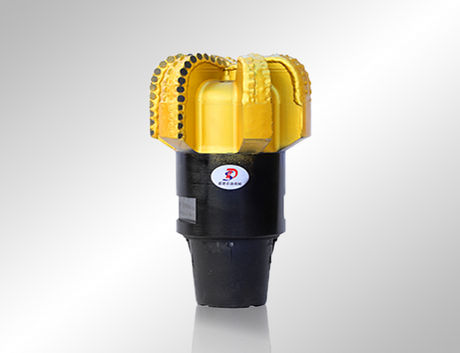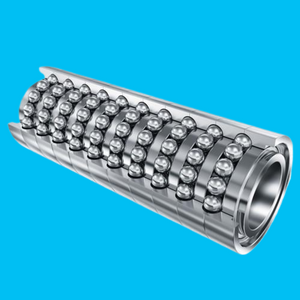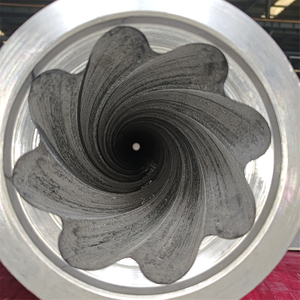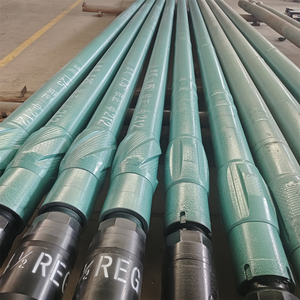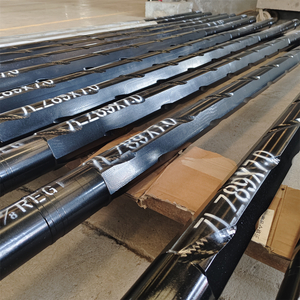Mud motors play a crucial role in modern drilling operations, especially in horizontal directional drilling (HDD) and oilfield drilling. These powerful devices convert hydraulic energy from drilling fluid into mechanical energy, enabling efficient drilling through various geological formations. Given their high workload and exposure to extreme conditions, the life expectancy of a mud motor is a common concern for drillers.
Understanding how long a mud motor lasts and how to extend its lifespan can significantly impact drilling efficiency, operational costs, and downtime. In this article, we will analyze the life expectancy of a mud motor, explore maintenance strategies to prolong its service life, discuss its compatibility with different rigs, highlight common mistakes made by drillers, and provide essential FAQs.
What is the Life Expectancy of a Mud Motor?
The lifespan of a mud motor depends on several factors, including operating conditions, maintenance, and the type of formations being drilled. Generally, a mud motor can last between 200 to 400 operating hours before requiring major servicing. However, its longevity can vary based on:
Operating Environment: Hard rock formations cause more wear and tear than softer sediments.
Drilling Speed and Torque: Excessive speed and torque accelerate component degradation.
Mud Quality: Clean, well-filtered drilling fluid reduces erosion and extends motor life.
Maintenance Frequency: Regular inspections and part replacements can prolong service life.
Comparison of Mud Motor Lifespans by Type
| Mud Motor Type | Average Lifespan (Hours) | Best for Formation Type |
| Standard Mud Motor | 200-300 hours | Soft to medium formations |
| High-Torque Mud Motor | 300-400 hours | Hard rock formations |
| Sealed Bearing Mud Motor | 250-350 hours | High-pressure drilling |
| Oilfield Mud Motor | 350-500 hours | Deep directional drilling |
The life expectancy of a mud motor can be extended with proper care, which we will discuss in the next section.
How Do You Take Care of a Mud Motor to Extend Its Life?
Regular maintenance is key to maximizing the lifespan of a mud motor. Here are essential maintenance practices:
1. Use High-Quality Drilling Fluid
2. Monitor Differential Pressure and Torque
3. Regularly Inspect Bearings and Transmission Components
4. Flush the Motor After Each Use
After drilling, flush the mud motor to remove debris and prevent blockages.
Use specialized cleaning solutions to clear out mud deposits inside the motor.
5. Follow Manufacturer's Maintenance Schedule
By implementing these best practices, drilling operators can significantly increase the life expectancy of a mud motor and reduce costly downtime.
Can Mud Motors Be Used on Any Rig?
Not all mud motors are compatible with every drilling rig. The suitability of a mud motor depends on factors like drilling depth, formation type, and rig specifications.
Factors to Consider When Choosing a Mud Motor for a Rig
Drilling Application
Rig Power and Hydraulic Capacity
BHA (Bottom Hole Assembly) Compatibility
Formation Type
Mud Motor and Rig Compatibility Chart
| Mud Motor Type | Compatible Drilling Rig | Best Use Case |
| Standard Mud Motor | Light to Medium Rigs | Shallow wells, soft ground |
| High-Torque Mud Motor | Heavy Rigs | Hard rock drilling |
| Sealed Bearing Mud Motor | Deep Drilling Rigs | High-pressure environments |
| Oilfield Mud Motor | Advanced Oil Rigs | Deep directional wells |
Choosing the right mud motor for a rig is essential for efficient drilling operations and optimal motor longevity.
What Mistakes Do Drillers Make with Mud Motors?
Even experienced drillers sometimes make mistakes that shorten the lifespan of a mud motor. Here are some of the most common errors:
1. Running the Motor at Excessive Speed and Torque
2. Using Poor-Quality Drilling Fluid
Contaminated drilling mud accelerates rotor and stator wear.
Always use filtered, high-quality drilling fluid to maintain motor integrity.
3. Ignoring Early Warning Signs of Wear
Unusual vibrations, pressure fluctuations, and reduced performance indicate potential failures.
Regular inspections can prevent costly breakdowns.
4. Skipping Routine Motor Flushing
5. Incorrect BHA Assembly and Alignment
Avoiding these mistakes can significantly improve the life expectancy of a mud motor and enhance drilling efficiency.
Conclusion
The life expectancy of a mud motor varies based on operating conditions, maintenance practices, and compatibility with drilling rigs. On average, a mud motor lasts between 200 to 400 hours, but proper care can extend its lifespan even further.
By using high-quality drilling mud, monitoring torque levels, conducting regular inspections, and following manufacturer guidelines, drillers can maximize the efficiency and longevity of their mud motors.
Choosing the right mud motor for a rig and avoiding common mistakes such as excessive torque, poor mud quality, and neglected maintenance ensures better performance and lower operational costs.
Investing in preventative maintenance and proper handling is the key to getting the most out of a mud motor, making drilling operations more efficient and cost-effective in the long run.
FAQs
1. How often should a mud motor be serviced?
A mud motor should be inspected after every drilling operation, with major servicing recommended every 200-400 hours.
2. What is the most common reason for mud motor failure?
Excessive torque and poor-quality drilling fluid are the leading causes of premature mud motor failure.
3. Can a mud motor be repaired after failure?
Yes, most mud motors can be rebuilt or repaired, but extensive stator or rotor damage may require full replacement.
4. How does drilling fluid affect mud motor lifespan?
Clean, high-quality drilling fluid reduces erosion and wear, extending the motor's operational life.
5. Are there different types of mud motors for different drilling conditions?
Yes, standard, high-torque, sealed bearing, and oilfield mud motors are designed for specific drilling applications and formations.











